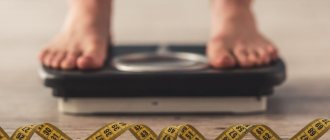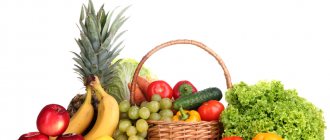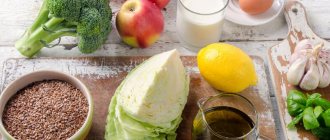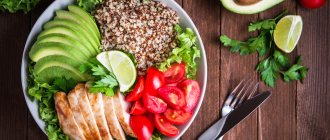Recently, mono-diets have been gaining popularity, following which you can lose 5–7 kilograms of excess weight in a week. One of these is the kiwi diet. Kiwi is an exotic fruit that contains many valuable micro- and macroelements: sodium, calcium, potassium, iron, zinc, phosphorus, manganese; vitamins of group B, PP, A, E, C, K. Kiwi also contains a lot of organic acids and dietary fiber.
If you regularly consume this fruit, you can strengthen the immune system and the body's protective functions, and improve your emotional state. Kiwi also has a good effect on the functioning of the cardiovascular system, respiratory and digestive organs, and reduces the risk of developing urolithiasis pathological processes.
Kiwi is a natural fat burner, so it is often included in the diet of people losing weight. These fluffy fruits contain a large amount of vitamin C and flavonoids, which help the body break down fat cells, converting them into energy. But you need to introduce kiwi into the menu gradually so that there are no problems with the functioning of the gastrointestinal tract.
The calorie content of the fruit is only 40 kcal per 100 grams of fresh product. Of course, simply eating kiwi will not help you lose weight. To lose extra pounds, you will have to carefully review the rest of your diet. Therefore, you should not consider this fruit as a magic remedy that will help normalize weight.
Composition, energy value
Depending on the variety, the weight of 1 fruit ranges from 50 to 150 grams.
Most of the kiwi comes from water (84%), the BJU ratio is 1%:1%:10%. About 10% of the exotic fruit consists of fiber, disaccharides, monosaccharides, and nicotinic acid. The nutritional value of one kiwi weighing 100 grams is 48 kilocalories [7]. Due to its low calorie content, the fruit is considered dietary and is recommended for consumption by people who are losing weight. Table No. 1 “Vitamin composition of kiwi”
| Name of vitamin | Nutrient content per 100 grams of product, milligrams [8] |
| Ascorbic acid (C) | 180 |
| Pyridoxine (B6) | 0,65 |
| Niacin (RR) | 0,34 |
| Riboflavin (B2) | 0,04 |
| Folic acid (B9) | 0,025 |
| Thiamine (B1) | 0,02 |
The amount of vitamin C in one medium kiwi is 200% of the daily value.
Thus, with regular consumption of half the fruit per day, you can replenish the body’s need for ascorbic acid. Table No. 2 “Mineral composition of kiwi”
| Name of mineral | Nutrient content per 100 grams of product, milligrams [9] |
| Potassium | 315 |
| Chlorine | 42 |
| Calcium | 40 |
| Phosphorus | 34 |
| Magnesium | 25 |
| Sulfur | 16 |
| Sodium | 2 |
| Iron | 0,7 |
| Zinc | 0,14 |
| Manganese | 0,096 |
The diverse chemical composition of kiwi determines the high nutritional value and beneficial properties of the fruit [10].
Interestingly, the ripe fruits have a sour-sweet taste, which vaguely resembles a mix of freshly squeezed juices of pineapple, melon, and strawberries. In supermarkets and markets, as a rule, hard, unripe kiwis are sold [11]. After purchasing, it is not recommended to eat such fruits; let them ripen in the refrigerator or kitchen drawer. Ripe kiwi becomes very aromatic, acquires medium softness and a sweetish taste.
Grocery list
A person losing weight according to this scheme can eat protein foods (chicken, turkey, lean pork and fish, boiled eggs). The fruit goes well with eating other vegetables and fruits (except bananas and grapes), and low-fat fermented milk products.
It is strictly forbidden to eat food fried in oil, pickles, sweets, pastries, and bread. It is not recommended to drink alcohol throughout the diet.
Beneficial features
- Stimulates collagen production.
- Strengthens the immune system and prevents colds [12].
- Improves digestion, relieves heaviness in the stomach [13].
- Prevents premature graying of hair.
- Fights the formation of kidney stones.
- Reduces nervousness. In this regard, kiwi is recommended to be consumed during menopause and pregnancy to normalize the psycho-emotional state.
- Inhibits the formation of nitrosamines in the body.
- Burns fats that block arteries. Thanks to this, kiwi is useful for diseases of blood vessels and heart. In addition, the fruit reduces the risk of blood clots, fights excess cholesterol, and reduces the level of fatty acids by 15%.
- Improves physical performance.
- Reduces shortness of breath, cough, hoarseness.
- Prevents the development of vitamin deficiency, saturates the body with vitamins A, , , , , beta-carotene, folic acid, antioxidants, fiber, vegetable protein actinidin, pectins, flavonoids, organic acids [14].
- It has a laxative effect, so it is used to treat constipation.
- Activates cellular metabolism.
- Restores damaged DNA sections.
In addition, kiwi is widely used in cosmetology. It is used to make fruit masks and peelings that cleanse, tone, nourish the skin, improve tissue turgor and even out the complexion.
Most people remove the skin when eating kiwi, but it is better to eat the fruit with it, since the skin contains many antioxidants [15]. Thanks to this, the fruit has anti-allergenic, anti-inflammatory, and anti-cancer properties. Interestingly, the amount of biological antioxidants in the skin is 3 times greater than in the pulp. It is believed that it can get rid of dysbacteriosis, staphylococcus, and E. coli.
Kiwi is involved in the breakdown of subcutaneous fat and contains collagen, which prevents skin aging, so it is rightfully considered a fruit of female beauty.
Is it true that kiwis make you lose weight?
I would like to believe in the statement that kiwi breaks down fats, but this is just a myth. To verify this, you will need to understand the body's energy metabolism.
The body uses carbohydrates, fats and proteins for energy. Each gram of protein and carbohydrate provides approximately four calories, and each gram of fat provides at least nine calories. The most accessible source is the simple carbohydrate glucose; to obtain it, the body breaks down complex sugars.
With carbohydrate deficiency, the process of gluconeogenesis will be launched, and glucose will begin to be synthesized from proteins.
Fats are an additional source of energy, this applies not only to food, but also to fatty tissues in the body. When glucose is not supplied and there is not enough protein to meet energy needs, the body turns to its own reserves of sugars - glycogen accumulated in the liver and muscle tissue. Only after this reserve is depleted do fat tissue cells begin to break down into triglycerides and fatty acids, releasing energy.
Unfortunately, kiwi, like other foods, cannot help speed up this process. There are only two ways to burn glycogen and force the body to switch to fat breakdown, one of them is fasting. This method is dangerous, as it can lead to various consequences: stagnation of bile, muscle destruction, hungry fainting. The second method is more physiological - reducing caloric intake with regular physical activity. If you follow this path, the body will gradually use up existing fats and will not be able to accumulate new ones.
It turns out that kiwi cannot be considered a fat burner, and it will only help you lose weight as part of a balanced diet with a calorie deficit. The same applies to other fruits that are rumored to have the same properties: grapefruit, pineapple and papaya. They have not a direct, but an indirect effect on the process of losing weight.
Contraindications
A representative of the genus Actinidia is indicated for daily use by all persons, except people with allergies to citrus fruits, with digestive problems (high stomach acidity, gastritis, ulcers), and prone to diarrhea [16]. In case of stomach or intestinal inflammation, organic acids aggravate the disease, and as a result, the fruit can harm human health.
Before eating kiwi for the first time, make sure you are not allergic to this exotic fruit: introduce a new product in minimal quantities. If there is no reaction from the body (rashes, redness, swelling), the portion can be gradually increased.
Quitting the diet
Leaving the diet implies a gradual expansion of the diet so as not to gain back the lost kilograms and not get problems with the functioning of the gastrointestinal tract. In the first days, you should try to stick to a light diet: eat porridge with water, vegetable soups, low-fat fermented milk products. By gradually adding new foods, by the end of the week you can return to your usual diet.
How to eat kiwi?
The fruit is consumed both fresh and canned. Kiwi can be served with the peel, cut into rings or cubes, and made into juice, cocktail or confiture. The sweet and sour taste of the fruit will harmoniously complement meat dishes, vegetable or fruit salads, and pizza. A marinade for barbecue is prepared using kiwi. The sour juice of the berry breaks down the protein, resulting in the meat being soft and tender.
How to eat kiwi?
- Along with the peel. The shell contains pectin, fiber, which helps digestion, ascorbic acid, which strengthens the immune system, and vitamin E, which has a pore-tightening effect.
- Only pulp. To do this, cut the fruit in half and eat the inside with a spoon.
- Make a smoothie. Grind in a blender 100 grams of blueberries, 150 grams of strawberries, 1 kiwi with peel, 200 milliliters of orange juice, 1 peeled banana, 5 grams of flax seeds. The resulting vitamin drink must be drunk immediately after preparation, otherwise it will lose its beneficial properties.
Kiwi cocktail recipes
The simplest cocktail is crushed kiwi pulp in kefir; one fruit is taken for one glass of low-fat drink. To add a more pronounced taste, you can add a few drops of lemon juice or a couple of mint leaves.
An equally delicious cocktail can be prepared with water. You will need: one kiwi, half a glass of cold water, a couple of slices of lemon and a bunch of parsley. All components are crushed and mixed in a blender; the drink is recommended to be drunk as a snack between main meals.
Kiwi for pregnant women
The fruit is of particular value for women who are expecting a child.
Why is kiwi so good for pregnant women?
- Contains potassium, which is necessary for the normal functioning of the heart, nervous system of the mother and baby.
- Reduces the likelihood of constipation.
- Serves as a source of vitamins for the normal intrauterine development of the baby.
- Improves oxygen delivery to tissues.
- Helps to absorb iron, which is involved in the production of hemoglobin and is needed by the child for normal development. Otherwise, the fetus will gradually take red blood cells from the mother’s body and the pregnant woman will develop anemia.
- Protects against infections, supports the development of the placenta.
- Promotes the formation of bone and dental tissue in a child.
- Prevents heartburn and a feeling of heaviness after eating in expectant mothers.
- The iodine contained in kiwi prevents congenital pathologies of the baby, since the thyroid gland produces hormones that affect the formation of the body as a whole.
In addition, the exotic fruit contains minerals and vitamins that are responsible for the proper development of the neural tube, eyes, and bone marrow function. Kiwi is needed for a woman’s reproductive organs, maintaining the integrity of cell membranes and maintaining pregnancy.
How to take for weight loss
The shaggy fruit is used to combat excess weight and to organize proper nutrition. For this reason, it cannot be used for long-term mono-diets and fasting days. Nutritionists believe that it is useful to eat kiwi before lunch, but not more than 2 pieces. You should also listen to these tips:
- It is not recommended for people with gastritis and ulcers to eat fruits in the skin, as this may irritate the stomach.
- Yellow kiwi is more beneficial for weight loss.
- You can eat avocado together with the shaggy fruit, which has a beneficial effect on the female body.
- Kiwi is a fruit that affects digestion, speeding it up. Therefore, you need to eat it 30 minutes before a meal, or 2 hours after lunch.
- Ripe fruits that are not capable of causing stomach irritation are suitable for consumption.
- Kiwi should not be stored in the refrigerator, as it may lose all its beneficial substances.
- The fruit is useful only in its fresh form. Heat treatment will deprive it of most vitamins and microelements.
Eating Chinese gooseberries before meals reduces the feeling of hunger and activates the process of burning calories. But kiwi after eating will help eliminate the feeling of heaviness in the stomach, bloating and belching.
Nutritionists talk about the benefits of green fruit if you eat it before bed. Kiwi at night for weight loss helps cleanse the body, suppresses the feeling of hunger and removes accumulated toxins in the intestines. All these aspects are very important in the fight against excess weight.
Kiwi for weight loss
The fruit contains fat-digesting enzymes, enzymes and a minimal amount of carbohydrates, so it is widely used for losing extra pounds.
The kiwi diet is designed for 7 days and allows you to lose 3 kilograms during this period and cleanse the body of toxins. During the week, before breakfast, lunch, afternoon snack and dinner, you need to eat 2 fruits.
Allowed products for consumption:
- low-fat yogurt;
- green apples;
- grapefruit;
- wheat sprouts;
- cereals;
- freshly squeezed orange juice;
- still mineral water (minimum 1.5 liters per day);
- strawberry;
- lean semolina dumplings;
- fat burning cocktail;
- cottage cheese (0% or up to 5%);
- wholemeal bread;
- bran.
The kiwi diet is contraindicated for people with diseases of the digestive tract.
The principle of preparing one serving of a fat-burning cocktail:
- Peel one kiwi and cut in half.
- Wash 8 sprigs of parsley and mint. The latter, in turn, is disassembled into leaves and the stems are discarded.
- Cut 2 lemon rings with zest, 5 millimeters thick.
- Place all ingredients in a blender bowl, add 5 milliliters of honey, pour in 100 milliliters of still water, and grind.
It is recommended to drink the resulting cocktail at least twice a day immediately after preparation. It helps the body break down fat deposits, fills with energy and saturates with healthy vitamins and minerals.
Best materials of the month
- Coronaviruses: SARS-CoV-2 (COVID-19)
- Antibiotics for the prevention and treatment of COVID-19: how effective are they?
- The most common "office" diseases
- Does vodka kill coronavirus?
- How to stay alive on our roads?
To adjust body weight by 1 kilogram, it is recommended to do 1-2 fasting days on kiwi. During this period, you need to limit your consumption of exotic fruit (1 kilogram per day) and 2 liters of clean water.
Menu
There are 2 types of weight loss methods using Chinese gooseberries - strict and gentle. The first group includes mono-diets, the menu of which does not include other products except kiwi, and the options from the second group are distinguished by a balanced diet. On strict diets you can lose weight quickly in a short period of time, but gentle ones allow you to do this more rationally.
Option for 3 days
The first option is designed for 3 days - a strict diet. Kiwi for weight loss is the only food product here. The menu for each is the same - 5 ripe fruits and at least 2 liters of clean water. The entire amount of berries can be divided into 4-5 doses. Since the diet is low in calories, it is advisable to plan it on the weekend and avoid heavy physical activity during this time.
Option from 3 to 7 days
Balanced menu:
- breakfast - oatmeal, boiled in water or doused in the evening with kefir with a fat content of up to 1%, with the addition of pieces of kiwi, apple and grapefruit;
- second breakfast - freshly squeezed citrus juice, diluted in half with clean water;
- lunch – low-fat cottage cheese with pieces of kiwi, boiled chicken breast the size of a palm;
- afternoon snack - a cocktail prepared in a blender from kiwi and low-fat kefir;
- dinner - salad of kiwi, apple and orange with low-fat kefir or yogurt.
For breakfast you can prepare not only oatmeal, but also pearl barley or millet porridge.
Important: For lunch, you can include low-fat soup with vegetables without meat, and instead of chicken, you can sometimes boil or steam fish or lean meat.
Diet for a week
The essence of this program is to eat 1 kg per day. fruit. The total weight of the remaining products should be 0.5 kg. per day.
A sample menu for each day looks like this:
| Breakfast | 2 kiwis, 150 g low-fat cottage cheese, green tea. |
| Lunch | Cocktail of 2 green fruits and kefir. |
| Dinner | Rice with vegetables (150 g), green salad, mineral water, 1 kiwi. |
| Afternoon snack | Fruit salad. |
| Dinner | Boiled fish (100 g), boiled broccoli (100 g), 1 green fruit, herbal tea. |
Between meals you should drink at least 1 glass of still drinking water. Fruits do not have to be eaten with meals. You can do this half an hour before meals or an hour after it.
Nutritional value of the fruit
If you are missing dessert after breakfast or lunch, pay attention to this product.
The juicy green pulp of kiwi is ideal for losing weight without harm to health. One medium-sized fruit contains a minimum amount of calories and fat, but many useful substances.
Nutritional value of the fruit:
- calories – 46;
- fats – 0.4 g;
- saturated fat – 0 g;
- cholesterol – 0 mg;
- carbohydrates – 11 g;
- protein – 1 g;
- dietary fiber – 2 g;
- sodium – 2 mg;
- vitamin C – 70 mg;
- calcium – 26 mg;
- magnesium – 13 mg;
- potassium – 237 mg;
- carotenoids – 133 mcg.
In terms of vitamin K content, the fruit is ahead of the orange. When losing weight, kiwi promotes good health and prevents flu and colds. It is one of the few plant sources of folic acid, which is valuable for vegetarians. It ensures the absorption of B vitamins and iron.
The fruit is a source of vitamin E. This is a very valuable quality when losing weight. The vitamin helps tighten the skin after losing extra pounds. The phytonutrients in the fruit help asthmatics avoid breathing problems during exercise.
Water-soluble antioxidants reduce inflammation in arthritis and rheumatism.
Pros and cons of the diet
The technique is considered the most healthy of all existing mono-diets. It is well tolerated by the body and does not cause intestinal upset. With its help, you can lose up to 10 kilograms in a month without feeling particularly unwell. However, it is immediately worth noting that you cannot follow this diet for too long. The problem is that the menu is not only low in calories, but also poorly balanced. In the first days of the diet, many experience a loss of strength, dizziness, and mild nausea.










